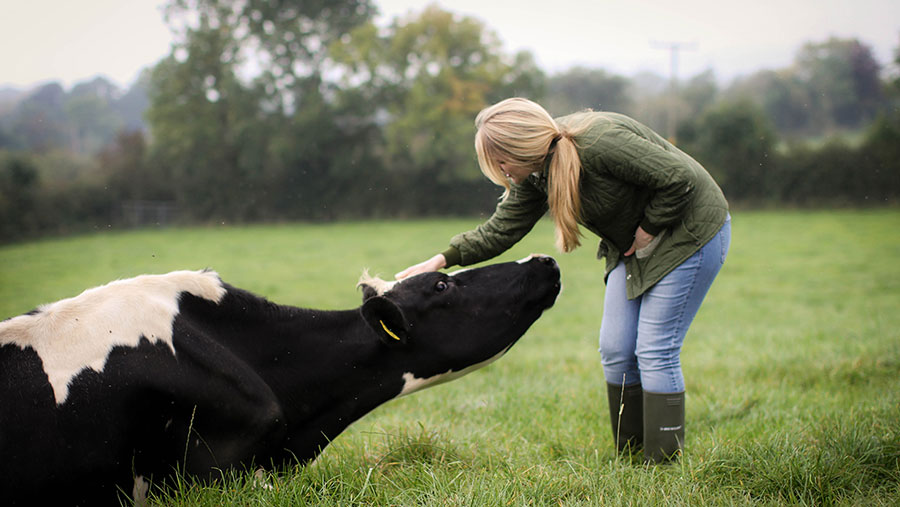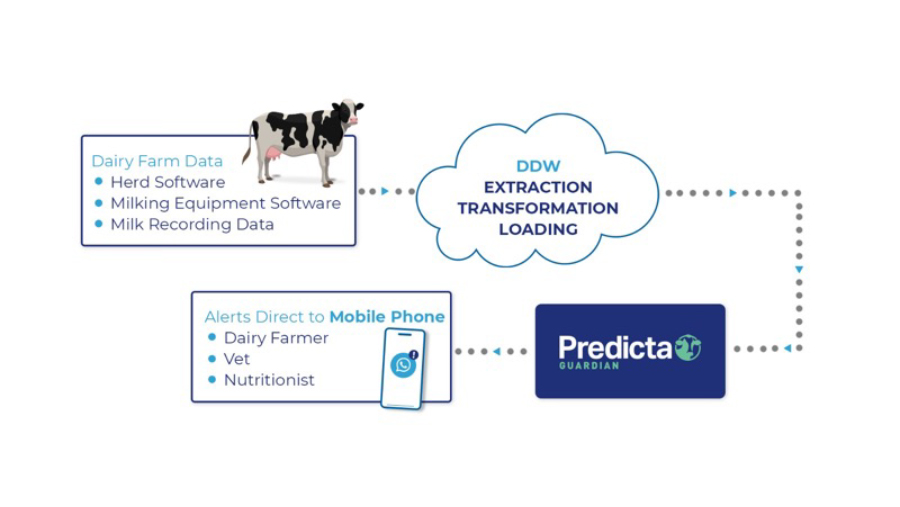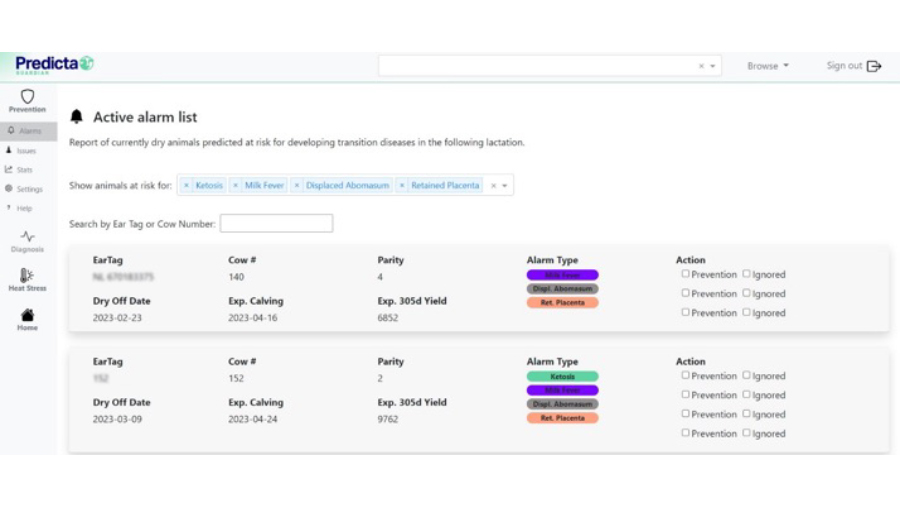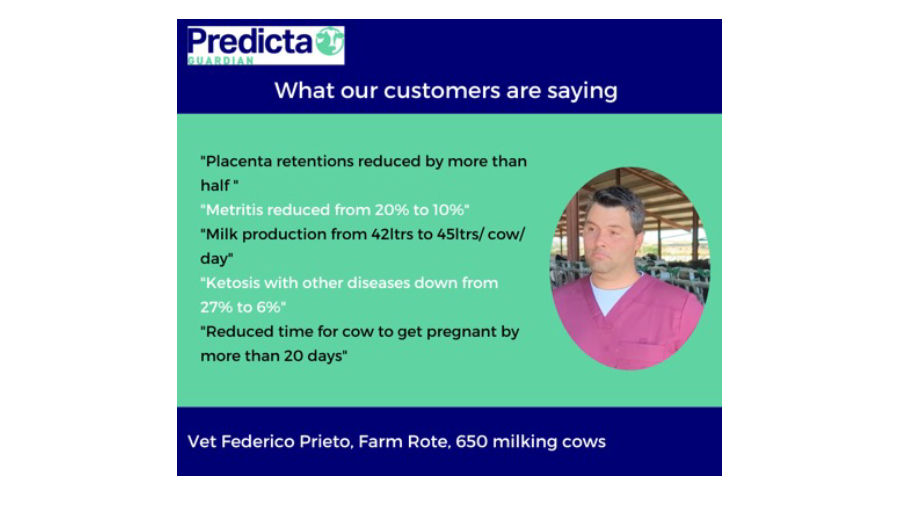Advertiser content
How to eliminate costly transition cow diseases on your farm
The three weeks before and after calving, also known as the transition period, are full of changes for the dairy cow which make her very vulnerable.
Such changes include hormonal, metabolic, immune, nutritional, environmental and reproductive changes.
In this sensitive period, if a cow gets sick with diseases known as transition cow diseases, it can impact milk production, reproductive performance, and overall herd profitability.
Undiagnosed transition cow disease
Detecting and managing transition cow diseases is a crucial aspect of successful dairy farming. The earlier they are detected the less side effects there are with less impact on the herd.
However, vets and farmers are often not aware of the level of transition diseases in a herd.
The cow looks fine and is giving a healthy amount of milk, so the assumption is that there is no disease.
However, a recent study carried out in the UK in 2019 on 1,748 dairy herds by Macrae et al. found on average a herd had a 28.5% incidence of subclinical ketosis (undiagnosed) in the first 20 days of lactation.
Could this also be the case on your farm? Could 28% of your cows not be reaching their full genetic potential without you knowing? Could you be having a higher milk yield?
The cost of ketosis for your herd
A study conducted in the Netherlands found that the cost of both clinical and subclinical ketosis combined in their sample cost a dairy farm an average of €3,613 per year for a standard farm and €7,371 per year for a high-risk farm.
The costs for a single case of clinical ketosis was €709, while the costs for a single case of subclinical ketosis were on average €150 (Steeneveld et al. 2020).
These are significant numbers and with the market being so volatile, and also with ever-increasing demands, they should not be taken lightly.

© Dairy Data Warehouse
The benefits of detecting transition diseases early
Part of good herd management implies that the vet/farmer is detecting transition diseases very early on.
Early identification and proactive management of these diseases are vital to achieve higher milk yields, enhanced reproductive performance and reduced culling rates because:
- Diseases are prevented from causing further problems and progressing on
- The farms reduce the severity and duration of the illness
- It minimises treatment costs and reduces the need for veterinary interventions
- Helps the farm save on medical expenses by minimising the risk of prolonged treatment
- Produces more targeted management strategies such as nutritional adjustments.
Prevention over cure
As you can see early detection can have a lot of positive effects for your herd. However, prevention is always better than cure.
One way of preventing these diseases would be to preventatively treat all transition cows.
This, however, would mean high costs and some of these prevention treatments would of course be administered unnecessarily.
Technology has now advanced further and taken us to the next level.
What if we told you, you can now know which cows are at high risk for a particular transition disease weeks before it actually happens?
Over recent years a lot of data has been collected on farm from sensors such as milking machines, health and veterinary records, reproduction and breeding rates, feed and so much more.
When a large number of data is collected over time and over thousands of herds, a predictive model can be created using artificial intelligence.
Data from milk recordings or milk meter data, together with reproduction data from previous lactations, is collected to determine whether a given cow is at risk of a transition cow disease.
Namely, retained placenta, milk fever, ketosis and displaced abomasum.
Don’t wait till it’s too late

© Dairy Data Warehouse
Predicta GUARDIAN connects with the current herd management software on farm and using predictive modelling sends alerts to farmers/vets on their WhatsApp, email or SMS during the dry period well before the cow’s vulnerable stage.
This gives a lot of time for great farm management and to ensure cows are healthy and reach their full genetic potential, and for higher farm profitability.

Alerts directly to farmer’s/vet’s phone © Dairy Data Warehouse
The Predicta GUARDIAN dashboard
The Predicta GUARDIAN dashboard is the web application which can be accessed from time to time to change settings, record events, get a better drill down of information including frequently asked questions where we answer questions asked by other farmers.

© Dairy Data Warehouse
What other farmers have to say

© Dairy Data Warehouse
Learn more
Send an email to inquiries@dairydatawarehouse.com or visit the website to learn more about the endless possibilities of enjoying the benefits of using artificial intelligence for your farm.
Provided by
At Dairy Data Warehouse (DDW), we unlock the full potential of data on dairy farms across the globe to enable the industry to harness big data and AI for sustainable and more profitable farming. DDW collects farm data from the herd management software and other sources on farm. We ensure high data quality by cleaning and transforming it into a unified, comparable set for AI driven strategic decision-making, benchmarking and insights. Our solutions support key stakeholders in nutrition, genetics, animal health, cow monitoring, and milking equipment. Let’s connect to explore how data can drive your business forward.
